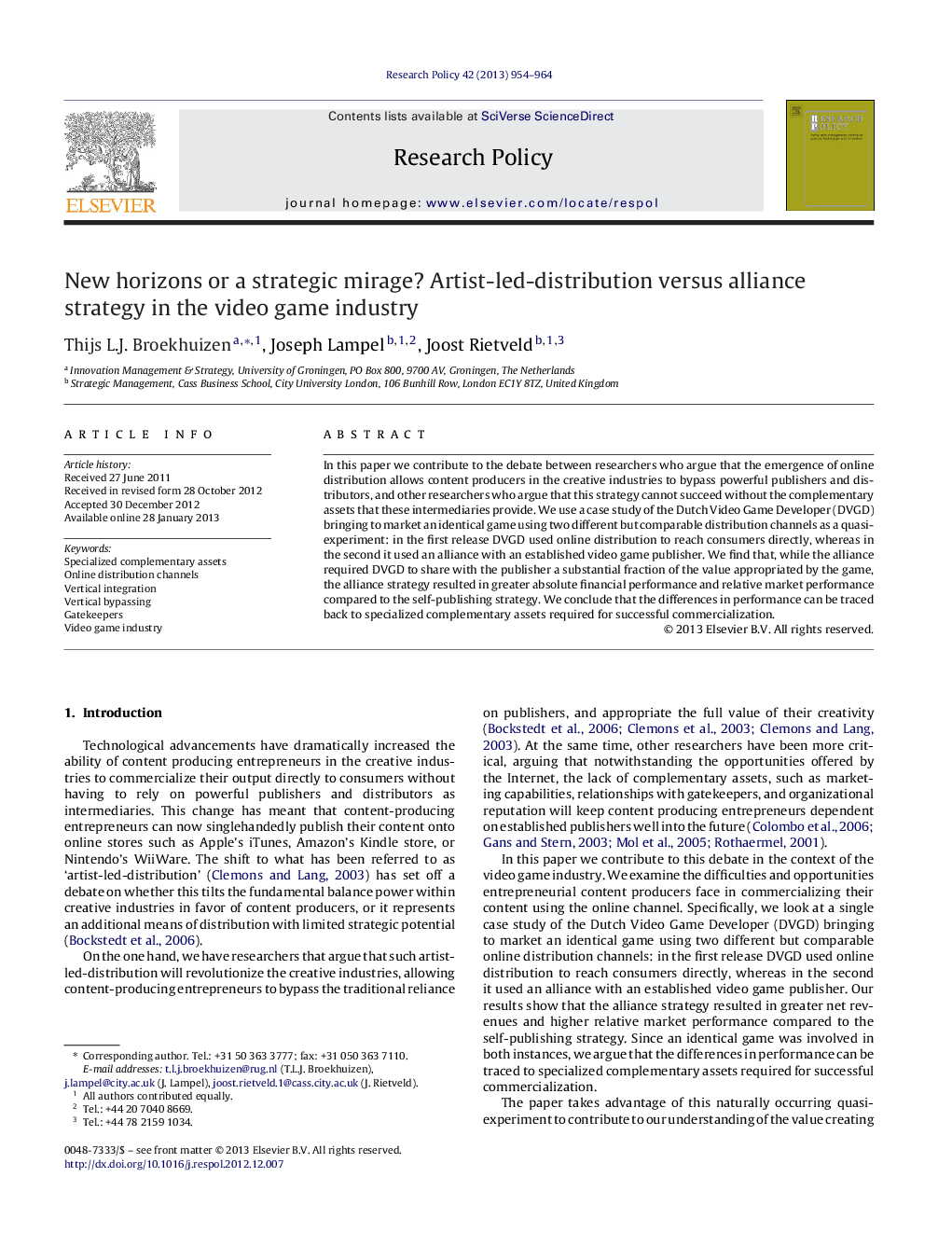| Article ID | Journal | Published Year | Pages | File Type |
|---|---|---|---|---|
| 985092 | Research Policy | 2013 | 11 Pages |
In this paper we contribute to the debate between researchers who argue that the emergence of online distribution allows content producers in the creative industries to bypass powerful publishers and distributors, and other researchers who argue that this strategy cannot succeed without the complementary assets that these intermediaries provide. We use a case study of the Dutch Video Game Developer (DVGD) bringing to market an identical game using two different but comparable distribution channels as a quasi-experiment: in the first release DVGD used online distribution to reach consumers directly, whereas in the second it used an alliance with an established video game publisher. We find that, while the alliance required DVGD to share with the publisher a substantial fraction of the value appropriated by the game, the alliance strategy resulted in greater absolute financial performance and relative market performance compared to the self-publishing strategy. We conclude that the differences in performance can be traced back to specialized complementary assets required for successful commercialization.
► This paper explores the strategic choice entrepreneurial content producers have to commercialize creative content. ► The online distribution channel allows entrepreneurial content producers to bypass publishers. ► A case study illustrates the consequences of two strategies: (a) artist-led-distribution and (b) strategic alliance strategy. ► Results illustrate that publishers add value using their specialized complementary assets. ► Content producers benefit more from forming relationships with publishers than by vertically bypassing them.
